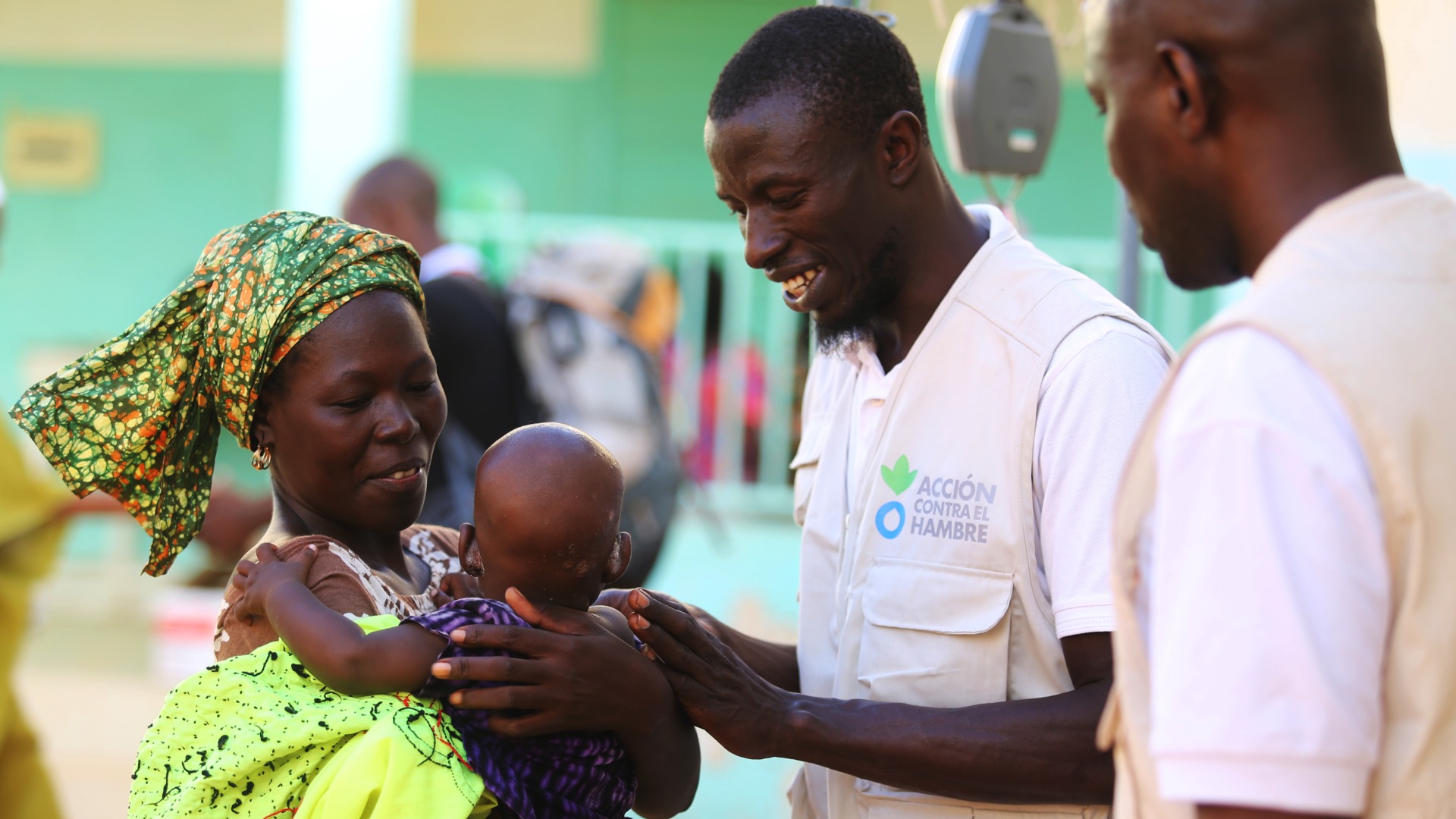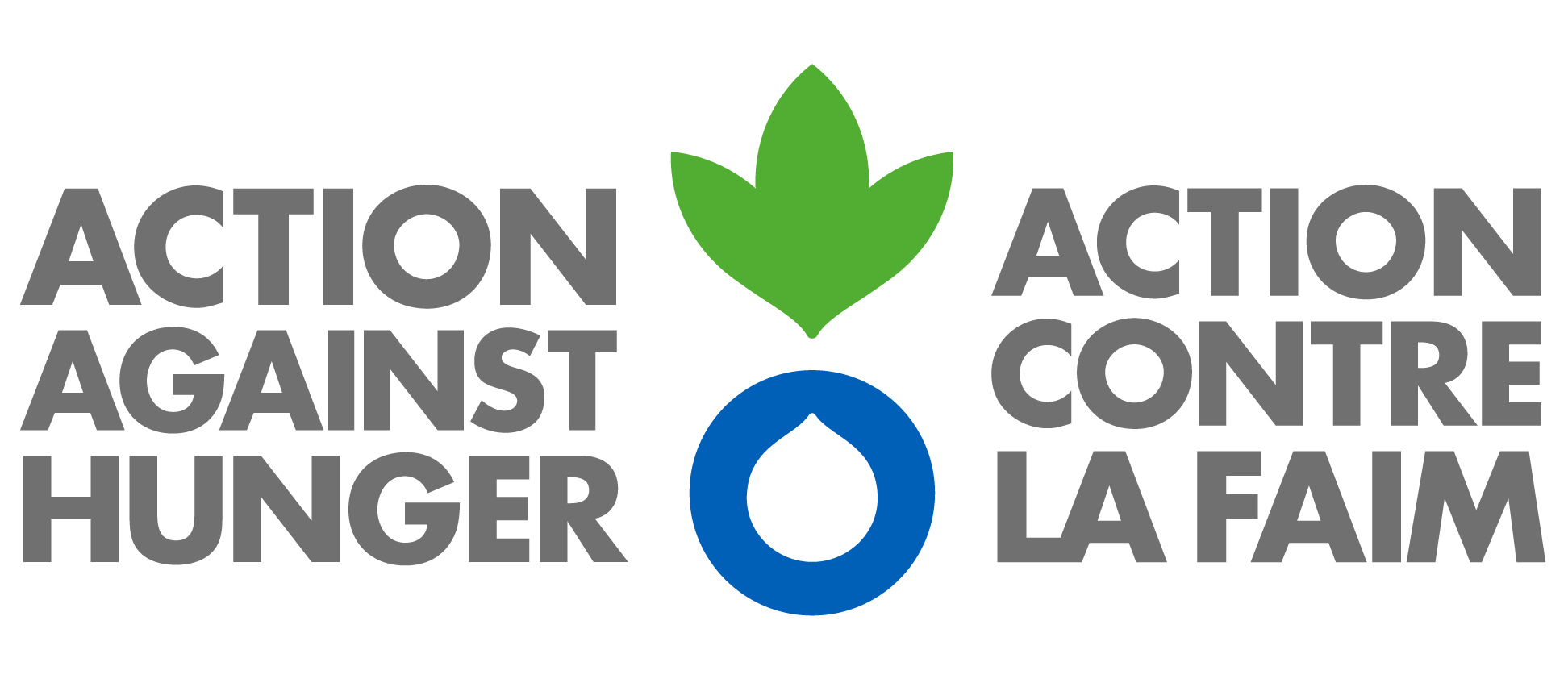Glossary

Every industry develops a body of jargon, acronyms, and specialized terms as shorthand for routine conversations, and the humanitarian community is no different. Unfortunately, if left undefined, jargon and acronyms can serve as barriers to broader understandings of the work we do. The following glossary provides clarification for the most common terms and acronyms used by humanitarians working on emergency, nutrition, water and sanitation, and food security programs.
Specialized Humanitarian Terminology
Acute malnutrition
Acute malnutrition results in a below-average weight for height score and/or the presence of bilateral oedema and it reflects the current nutritional situation of a child. It is due to nutritional deficiencies (poor intake or absorption). A distinction is made between moderate acute malnutrition and severe acute malnutrition. Severe malnutrition is linked to a very high risk of mortality if it is not treated immediately. Moderate malnutrition is not immediately life threatening but should be treated in order to prevent severe malnutrition from developing.
Body Mass Index (BMI)
The number reached when weight (in kilograms) divided by height (in meters) is squared; used in assessments of malnutrition.
Basic Nutrition Services Package (BNSP):
Measures to treat and prevent malnutrition as well as to promote optimal nutrition behaviors and practices, including acute malnutrition management, micronutrient support, immunization and deworming.
Blanket Supplementary Feeding Program (BSFP)
A supplementary feeding program using fortified blends of Food Aid, such as Corn-Soy Blend (CSB) and cooking oil, to ensure moderately malnourished children and other vulnerable groups (such as those leaving a Therapeutic Feeding Center and pregnant or lactating women) receive the recommended intake of 2,100 calories per day. A blanket program provides food to all children or vulnerable people in a given area as a preventative measure.
Chronic Malnutrition
Chronic malnutrition causes growth retardation, meaning a below-average height for age score. It is due to chronic or temporary nutritional deficiencies (energy or micronutrients), and/or it can also be the effect of an exposure to repeated infections or even to generally poor living conditions, which hinders (or has hindered) the growth of a child.
Complementary Feeding
A program for very young children starting at six months when breast-milk is no longer adequate for a child’s nutritional needs. For populations dependant on food aid, additional food items are often added to make the diet more nutritious and in particular to ensure adequate micronutrients.
Complications
Symptoms associated with acute malnutrition that require specialized in-patient treatment. These include swelling (Oedema), fever, lower respiratory tract infection, severe dehydration, anemia, decreased alertness and lack of appetite for therapeutic feeding products.
Crude Death Rate (CDR)
A vital statistics summary rate based on the number of deaths occurring in a population during a given period of time, usually a calendar year, and a given geographical area. Expressed per 1,000 people. A rate above two contributes to a declaration of famine.
Coping Strategies Index (CSI)
A numerical indicator of household food security based on a questionnaire about what people do in the absence of sufficient food or money to buy such food. CSI is used to predict food crises, identify specific areas of greatest need, assess the impact of food aid programs in emergencies and to outline long-term trends.
Corn-Soya Blend (CSB)
A partially pre-cooked fortified food to supplement protein used in SFPs and MCH consisting of maize, soya beans, sugar, vitamins and minerals, consumed as porridge.
Corn-Soya Blend-Plus (CSB+)
A variant of CSB for children aged two years and over.
Corn-Soya Blend Double-Plus (CSB++)
A variant of CSB made of de-hulled soya beans, sugar, driedskim milk, refined soya bean oil, vitamins and minerals. Used as a complement to breast-feeding for children aged between six and 24 months.
Community-based Therapeutic Care (CTC)
Management of acute malnutrition in the home rather than in Therapeutic Feeding Centers (TFCs) with an added community focus, often involving referral by or follow-up with community health workers.
Edema
Swelling due to accumulation of water in body tissues, most commonly in the feet and legs. If a depression caused by applying a finger to a swollen area persists for some time the oedema is described as “pitting”; it is “bilateral” when two feet or legs are affected.
Famine
The most serious of the food security phases of the Integrated Food Security Phase Classification (IPC), which describes Famine/Humanitarian Catastrophe as “Extreme social upheaval with complete lack of food access and/or other basic needs where mass starvation, death and displacement are evident.” Famine is declared when Global Acute Malnutrition (GAM) exceeds 30 percent, Crude Death Rate (CDR) exceeds two and at least 20 percent of a population receives less than 2,100 calories per day. It is the absolute exhaustion or inaccessibility of food in a given zone, for entire populations, possibly causing death in the short term.
Food Security
A situation that exists when all people, at all times, have physical, social, and economic access to sufficient, safe, and nutritious food that meets dietary needs and food preferences for an active and healthy life. Food security is often broken down into three components: availability (in an area), access (by a household) and utilization/consumption (by individuals).
Global Acute Malnutrition (GAM)
The total rate of acute malnutrition in a given population. This is assessed in children aged between six and 59 months by determining the proportion whose Height for Weight, Middle Upper Arm Circumference (MUAC), etc measurements deviate by standardized degrees from the median or other benchmarks.
General Food Distribution (GFD)
The free distribution of a mixed basket of food, usually including gains, pulses and vegetable oil, to a particular population that lacks access to normal food sources because of a crisis. GFD is designed to meet immediate food needs and protect livelihoods.
Household Dietary Diversity Score (HDDS)
A measure of the range of food groups (cereals, vegetables, meat, fish, etc) consumed in a household in a given period. Twelve groups are used in the evaluation and the HDDS ranges from 0 to 12.
Height for Age (HFA)
A measurement taken in assessments of malnutrition in children aged between six and 59 months.
Household Hunger Scale (HHS)
A tool to measure household food deprivation, used to improve targeting of interventions and evaluate food security policies. A simple questionnaire produces one of three scores: Little to no household hunger; moderate household hunger; and severe household hunger.
High Impact Nutrition Interventions (HINI)
A comprehensive package of nutrition interventions including improved practices, micronutrient supplementation and management of malnutrition, which have proven impact on mortality and morbidity.
Hunger
A situation in which someone cannot obtain an adequate amount of food, even if the shortage is not prolonged enough to cause health problems.
Integrated Food Security Phase Classification (IPC)
A scale developed by UN agencies and NGOs using existing data (mortality rates, GAM, access to food and water, security, etc) to place geographical areas into categories ranging from “Generally food secure” to “Famine”, with the aim of harmonizing humanitarian analysis of and responses to crises, and ensuring the most efficient allocation of resources. IPC has been adopted in Burundi, Côte d’Ivoire, Kenya, Somalia, North Sudan, South Sudan and Uganda.
Integrated Management of Acute Malnutrition (IMAM)
A strategy aimed at integrating the prevention and treatment of Moderate Acute Malnutrition (MAM) and Severe Acute Malnutrition (SAM) into routine health services.
Infant and Young Child Feeding (IYCF)
Nutritional strategies designed to reduce child mortality and malnutrition by promoting optimal breast-feeding, complementary feeding, hygiene and childcare-related practices as well as related maternal nutrition and health.
Kwashiorkor
A condition caused by Severe Acute Malnutrition (SAM) that is characterized by bilateral pitting edema. Increased water retention means that such severely malnourished children may not display weight loss. Kwashiorkor can cause tight, shiny skin and hair discoloration.
Livelihood
The ways in which people earn an income, provide for themselves and their families; a term usually applied to vulnerable rural populations, especially pastoralist communities. Programs that support livelihoods are designed to increase communities’ ability to survive (economic, weather, etc) shocks.
Livelihood Assets
Factors that contribute to livelihood. These include natural resources, skills and technology, health, education, access to credit and social networks.
Malnutrition
Abnormal physiological condition due to an unbalanced diet (deficiency or excess) in quantity and/or quality.
Moderate Acute Malnutrition (MAM)
Also known as moderate wasting. Indicated when Weight for Height (WFH) is less than 80 percent of the median, or between minus two and minus three Z-scores from the median WFH of the standard reference population.
Marasmus
Severe wasting defined by Weight for Height (WFH) under 70 percent of the median WFH for the standard reference population, and/or Middle Upper Arm Circumference (MUAC) less than 115mm in children under five. A symptom of Severe Acute Malnutriton (SAM), marasmus often produces a wizened appearance.
Maternal and Child Health (MCH)
An interdisciplinary approach to the factors that influence the health and healthcare of women and children.
Middle Upper Arm Circumference (MUAC)
A measurement taken in the assessment of malnutrition which provides a good indicator of mortality risk.
Nutrition
Strictly speaking, the provision of the various food substances required to maintain life. In the broader context of humanitarian interventions, good nutrition is the result of adequate food security, health and care. It encompasses a diet of sufficient quantity and – particularly in the case of children – variety, as well as the availability of clean water and decent sanitation and hygiene.
Outpatient Therapeutic Program (OTP)
Treatment of uncomplicated cases of Severe Acute Malnutrition (SAM) using specialized products.
Plumpy’Nut
Peanut paste Ready-to-Use Therapeutic Food (RUTF) for severely malnourished children.
Plumpy’Sup
Peanut paste Ready-to-Use Therapeutic Food (RUTF) for moderately malnourished children.
Severe Acute Malnutrition (SAM)
A sub-category of GAM in which patients’ Weight for Height (WFH) is less than 70 percent of the median or whose MUAC is less than 110mm or who present oedema. Such measurements are generally taken from children aged six months to five years. SAM increases susceptibility to disease and mortality risk. SAM above 5 percent in a given area’s population is generally considered “very critical”, although the rate of increase in SAM is also a key factor in planning interventions.
Stabilization Center
Specialized medical facility for the treatment of acute malnutrition with complications.
Self-Sufficiency Ratio (SSR)
The magnitude of food production in relation to domestic utilization. SSR is used for specific commodities and groups of commodities; the higher the ratio the greater the self-sufficiency.
Stunting
Being too short for one’s age. A synonym for – and major effect of, or adaptation to – chronic (as opposed to acute) malnutrition, which can impede both physical and cognitive development. Stunting can also be caused by repeated acute infections.
Therapeutic Feeding
The provision of medical care and all required nutrients to severely malnourished children. It is the service provided under various headings such as TFC, TFP, OTP, CTC etc.
Therapeutic Feeding Center (TFC)
A place in which the provision of medical care and all required nutrients is provided to severely malnourished children.
Therapeutic Feeding Program (TFP)
A program through which the provision of medical care and all required nutrients is provided to severely malnourished children.
Under-Five Crude Death Rate (U5CDR)
CDR among children under five.
Wasting
Being dangerously thin in relation to height.
Wet Feeding
The supply of cooked or ready-to-eat meals, used in extreme situations when cooking beans, pulses and grain, etc, in the home is impractical for sanitary or security reasons or when populations are on the move.
Weight for Height
An indicator of acute malnutrition/weight-loss; also used to evaluate responses to food crises.
Z-Score
A statistical term used to define the gap between an individual measurement (for example WFH) and the median among a reference population. Also called a standard deviation, a Z-Score is a standardized yardstick that can be applied to different data sets.
Source: IRIN News.
For Action. Against Hunger.
KEEP UP WITH THE ACTION
Join our community of supporters passionate about ending world hunger.



